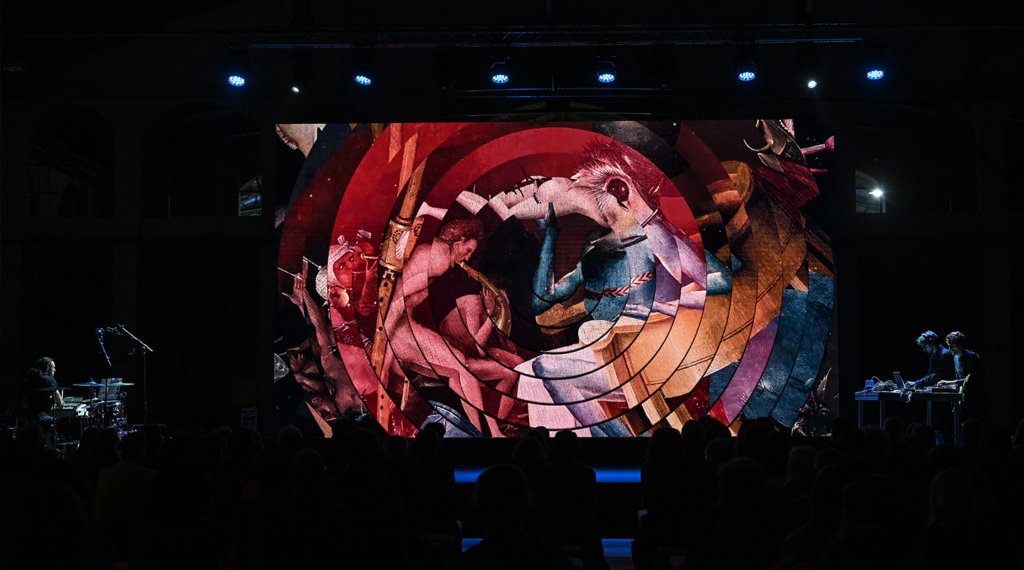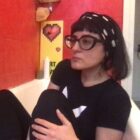Art as an engine of technological and social innovation

“Reimagine the Future Through Arts and Culture” was the first Philea event I took part in. The two-day meeting took place in Oviedo, the capital city of Asturias, and brought artists, cultural institutions and philanthropic organisations in contact with practices from art, science, technology and society. According to Philea’s Arts & Culture Thematic Network, it is at the nexus of these areas that in recent years people and organisations are developing practices and approaches that can respond to the uncertainty of our times in unexpected and interesting ways.
I guess this is why I was asked to moderate one of the panels, “Down to the Earth with the Environment”, focused on ecological transition. In my life, together with my companion and partner Salvatore Iaconesi, if there is one thing we have done, it is to embrace crises as opportunities ‒ taking infinite joy in dealing with complex phenomena of all kinds: our identities, the way a city expresses itself, the Arab Spring, climate change, Fukushima, cancer, and more.
We did this as artists (www.artisopensource.net) and then as founders of a research centre (www.he-r.it). In our methodology, art is what repositions data in society. Embracing a cyber-ecological approach, our aesthetic acknowledges the punk sensibility of having grasped and transformed into a powerful social imaginary the cry of the Western society facing the beginning of the financialisation of life. The oil crises during the ’70s was a turning point: the dollar was no longer tied to gold reserves, markets became de-commodified and what circulates globally through the new telecommunications infrastructures was no longer strictly “currency” but a flow of data and information mediated by algorithms. This process increases as everything – bodies, buildings, objects, plants, rivers, minerals – can generate data (e.g.: the so-called “internet of things”).
Data progressively becomes part of the environment. It is an epistemological turning point: With the internet the network becomes a space to be inhabited in which very different people express themselves, relate to each other, and invent new practices and new aesthetics. This process runs through and characterises the 1980s, reaching its peak between the 1990s and the first decade of the 2000s. Between 2009 and 2011, social networks and ubiquitous technologies exploded. A new icon dominates the market: the iPhone is the design object that inspires all forms of screens nowadays, it is the smartphone itself. We walk across the world – the Western world capitals, in China, Africa as well as in a Brazilian Bororo village – with these objects in our hands, in our bags, in our pockets: McLuhan’s global village describes this profound connection.
Not only are financial flows free to travel across the globe and time zones, people do so as well, extending their relationships and expressive opportunities in completely unpredictable ways. In human history when a new language and a new media emerge (i.e. respectively, the binary code and the global infrastructure materialised by the http:// protocol), the most radical, wild and uncontrollable forms of experimentation occur. Those who express themselves with that language and through that media – and begin to live unknown experiences of remote interconnection – generate practices, aesthetics, imaginaries and do so simply because they exist: they can make things happen. The period between the 1980s and the first decade of the 2000s is indeed a blossoming of innovative experiences and experiments. The artists who emerge and inhabit these worlds begin to manipulate “materials” made by data and code, they design interactive works, and experiment with interface, platforms and computational entities – such as viruses, bots, artificial intelligences.
This is what we have always done. The relationship between art and technology has always been the result of our co-evolution with the environment. What is new is the role of this relationship. The kind of art that is able to deal with data processing, computational languages and the creation of relational ecosystems (space of existence) can make us sensitive to complex phenomena – climate change to mention one – and thus to our environment. We do not have “senses” to perceive climate change. And sensing climate change is what can take our hand off the fire when we are burning. In other words, can exposing ourselves to data on rising temperatures burn like a flame? Can data become solid knowledge that changes behaviour? What does an ecological transition programme whose goal is to make us sensitive look like?
The debate on innovation systematically forgets that technology is (also and perhaps primarily) an aesthetic matter: in Greek aistanomai means “perceivable with our aesthetic apparatus, our senses”. Art is not (and has never been) a decoration of science: It is a mode of knowledge dedicated to experiencing ‒ and if one thinks about it, every art work is an experience that makes us sensitive to a certain phenomenon, and brings it to our perception.
The panel I moderated got it: organisations need art to run innovative programs. The Macarthur Foundation asks how to work with artists to make the circular economy “mainstream”, and at HIVOS the R.O.O.M. programme funds projects in the Middle East and Africa where art acts as a vector of structural change. The TBA21 – Academy invites artists and researchers to investigate the “body of water” (the ocean) while Marlén Lopez’s Biomimetic Laboratory shows architecture inspired by the living. The artistic duo hu513 (Castellanos/Valverde) closes the session by showing how plants and humans can communicate through data and sensors in unexpected ways.
Recognising art as an engine of technological, cultural and social innovation embodies the hope to become not only sensitive, but also sense-able to the complex phenomena of our environment. Art is today, in short, a question of survival. This must be understood by artists, scientists and researchers seeking new approaches and postures. And institutions must understand this, by inventing and promoting programmes that can describe and support the aesthetic challenge of our data and technologies in this specific direction. The language and shape of these programmes are themselves a creative act that calls on all stakeholders to imagine together, including foundations and philanthropic organisations.
Authors

